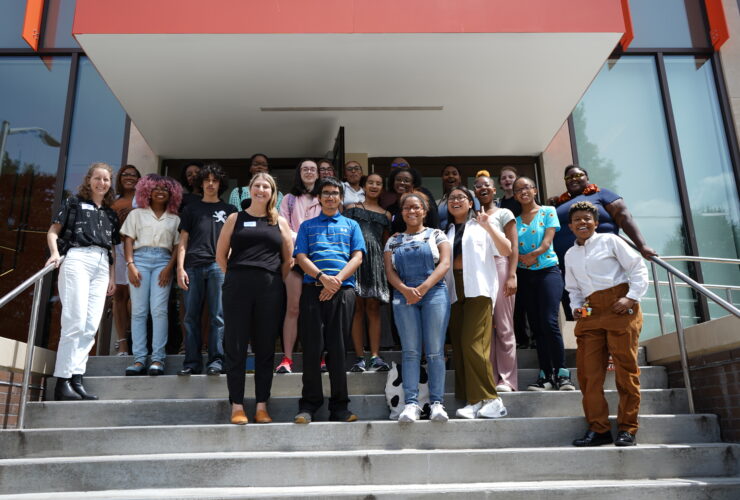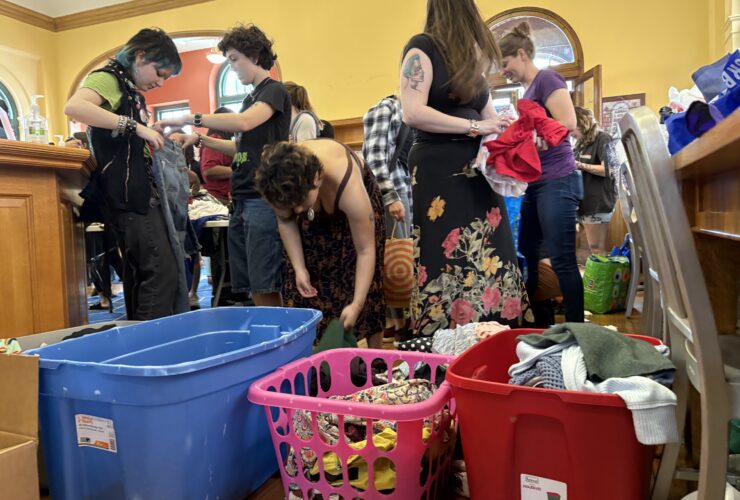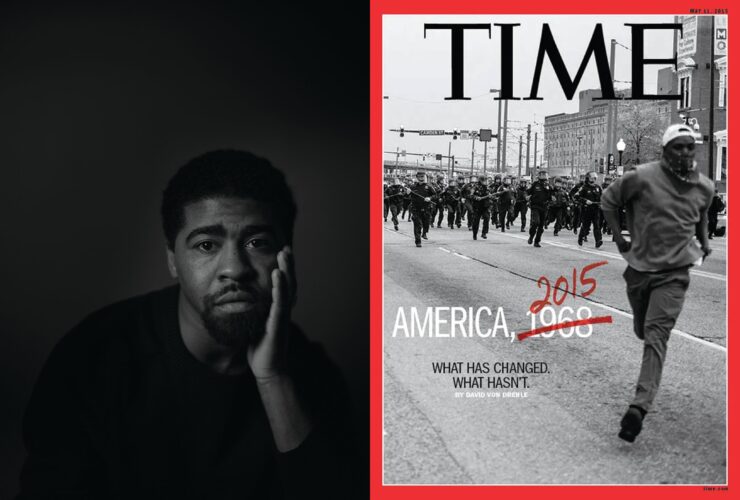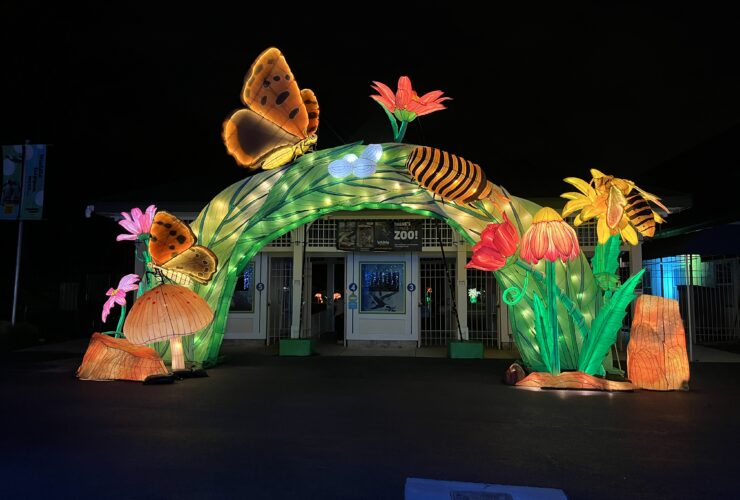News & Community
2020: Year In Review
Twenty of the most pivotal events in Baltimore this year, in chronological order.
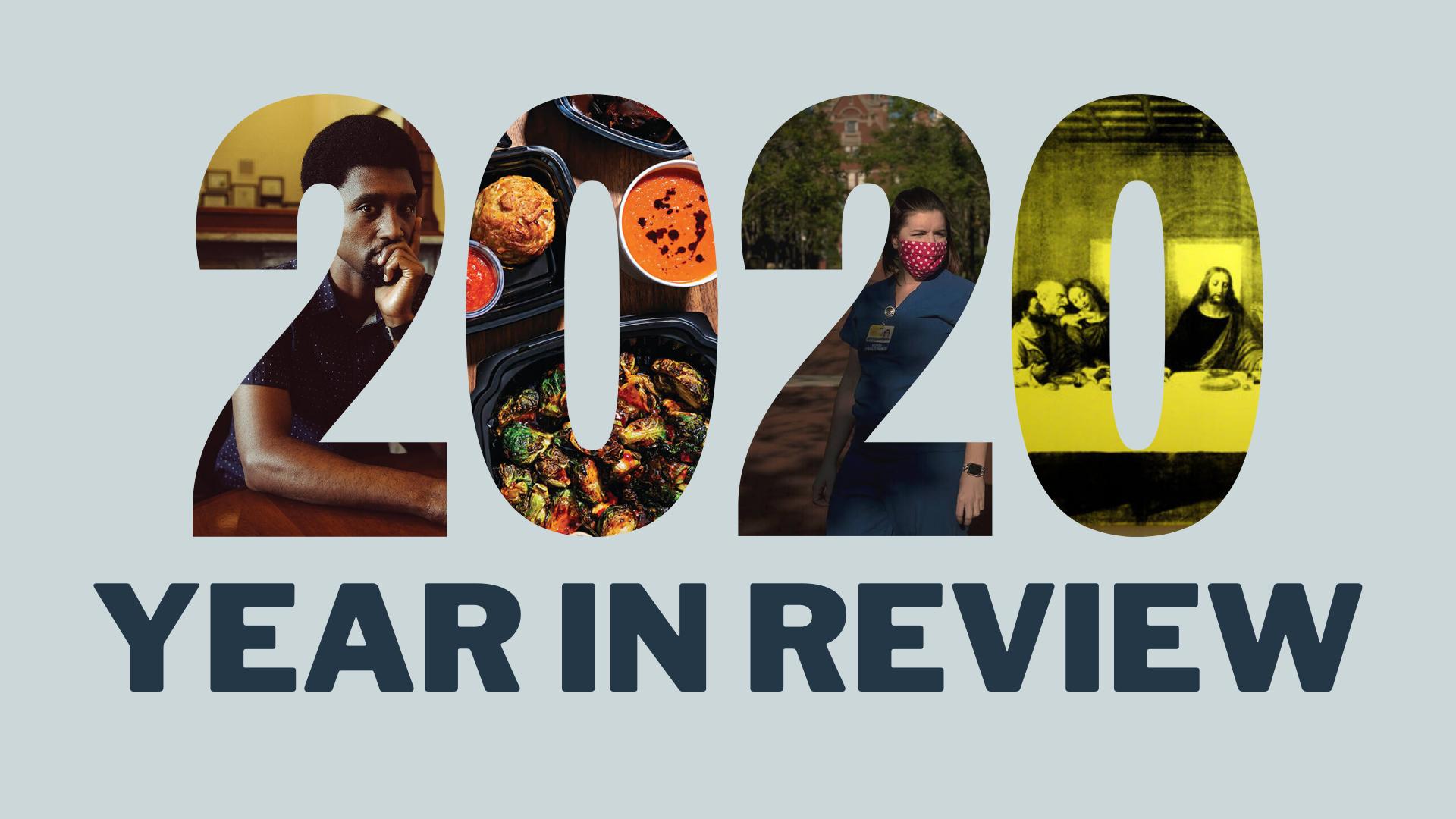
We’re not going to lie, 2020 was a lot. But the funny thing was, when we were sitting around “the office” (a Zoom chat room) trying to brainstorm the 20 biggest events of the year, we were a bit stumped. It’s not that a lot of stuff didn’t happen—it did. But, in a way, everything seemed to fall under the same three umbrellas—COVID, our nation’s and region’s racial reckoning, and the incendiary political climate. Heck, this entire list could’ve been about COVID alone—the heroic local efforts to combat and chart the spread; its massive unemployment toll; its impact on the dining, retail, and arts scenes; the canceled events (no Artscape or AFRAM); the disparities, both in terms of health care access and economic stability, that the virus underscored; the greater understanding of the “digital divide” that we gained, and so on. But, at the same, we literally spent the majority of the year stuck in our homes—so we were a little short on actual “events.” That said, here’s our best attempt to sum up an undoubtedly tragic and surreal year. —MW

JHU’s COVID-19 Dashboard Becomes a Go-To Resource
In January, a team of Johns Hopkins University engineers started tracking the novel coronavirus as it began its initial spread around the globe. Lauren Gardner, an infectious disease specialist and co-director of the school’s Center for Systems Science and Engineering, led a tiny team of PhD students to build an online, real-time dashboard to document the data, which quickly went viral itself. This summer, it garnered more than 4.5 billion hits a day from public health authorities, researchers, and the general public. Gardner’s impressive work landed her on Time magazine’s list of “The 100 Most Influential People of 2020,” in which Baltimore’s own former health commissioner Dr. Leana Wen declared the dashboard an “indispensable resource” and its inventor a hero in her own right. “In the face of an existential threat, Lauren took action,” wrote Wen. “She didn’t wait for others—she stepped up first. She democratized data and filled a void of public-health leadership. Lives will be saved because of her proactive work.” Photography by Mike Morgan
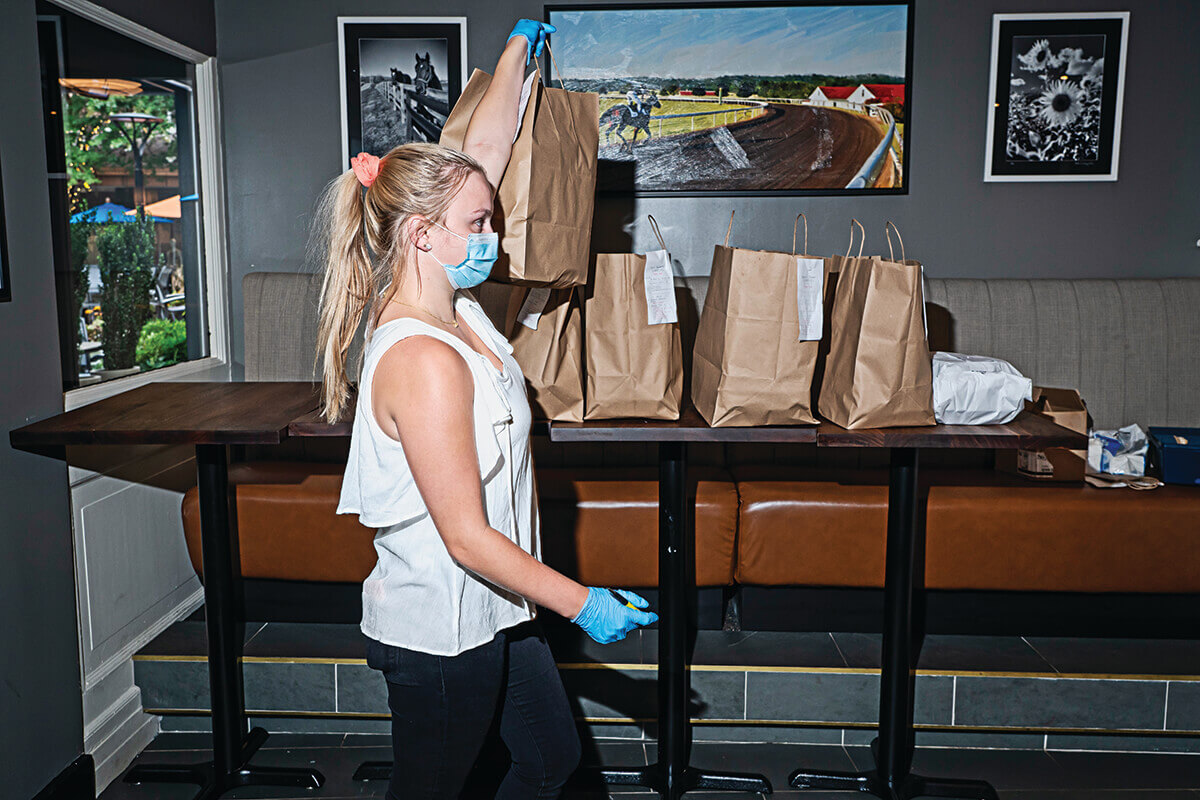
Restaurants Show Resilience
Restaurants have always been the lifeblood of our city, so when they were forced to close in mid-March due to the pandemic and then, over many months, re-opened at varying rates of capacity, we feared that this could spell the end of dining out as we know it. And while only time will tell, for now, something stirring has happened, as signs of reinvention and resilience abound. We could go on and on, but the pivots we appreciate most include outdoor parklets and streeteries, heated tents complete with swinging chandeliers, individual greenhouses, QR codes in place of paper menus, temperature checks, and contact lists, ad-hoc pantries, and soup kitchens feeding not only the hungry and the homeless but health care workers, too. While we mourn the ones we’ve lost (we will miss you Lobo and The Milton Inn), new spots—from Nihao to Café Dear Leon and Ovenbird Bakery—have sprung up, too. Clearly, the scene—however changed—is here to stay. We are smiling beneath our masks. Photography by Scott Suchman
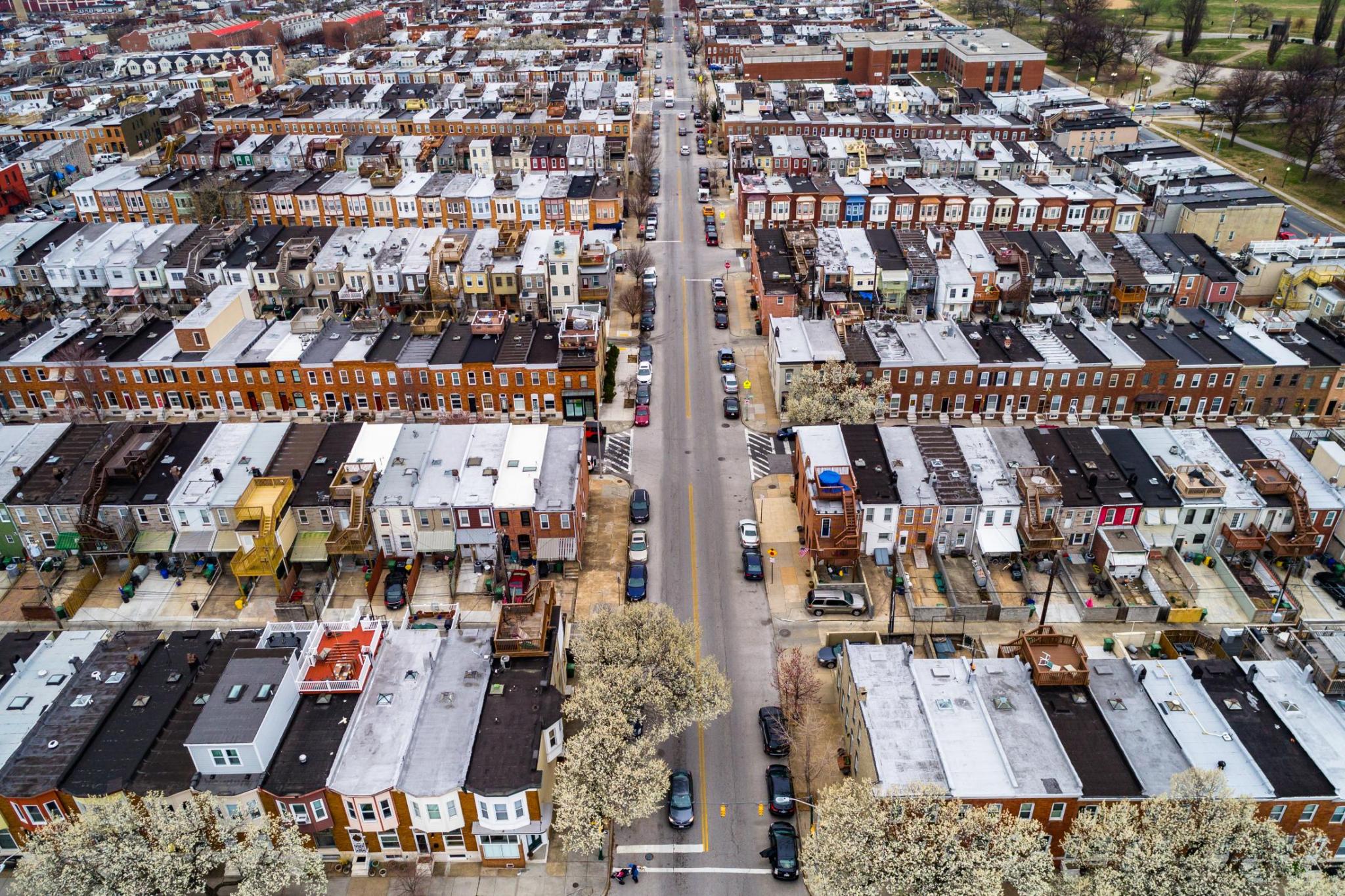
“Spy Planes” Launch Into the Skies Over Baltimore
High-tech aerial surveillance—some would say Orwellian—planes flew over Baltimore this past year, which city residents no doubt saw and heard day after day. A U.S. District Court judge gave the go-ahead in April to the civil liberties-challenged and privately funded Baltimore Police Department pilot program known as Aerial Investigation Research (AIR). The first of its kind in the country, the initiative collected images of vehicle and pedestrian movements across 90 percent of the city, up to 12 hours daily, for six months from May through the end of October after former Mayor Bernard C. “Jack” Young greenlit the experiment without a vote by the City Council. Newly elected Mayor Brandon Scott has said he does not support the surveillance program, or “spy planes” as the effort is often derided, so its future remains unclear. One recent follow-up study showed the aerial surveillance indicated a slight benefit—an increase of 3.6 percent—in “provisionally” closed cases with an arrest, but the question remains at what cost to Baltimoreans’ civil liberties. Meanwhile, the Ohio-based Persistent Surveillance Systems, which owns the technology, is pitching its eerie aerial program in St. Louis. Shutterstock

The Sun Wins Pulitzer Prize
It’s what every journalist dreams of—writing an investigative story that brings down a powerful figure and results in the Pulitzer Prize. And that’s exactly what happened this year when staff of the Sun won the Pulitzer for “Local Reporting” for discovering and covering the Catherine Pugh Healthy Holly scandal. But even as the paper continued to do superlative journalism, not all was rosy. In May, the Sun news guild announced it had found a local ownership group—its ranks include the Abell Foundation, the Goldseker Foundation, and former Baltimore County executive Ted Venetoulis—that wanted to buy the paper and turn it into a nonprofit. This proposal stemmed from the Guild’s dissatisfaction with the current owners, Tribune Publishing, whose relationship with notorious hedge fund firm Alden Global Capital has led to layoffs and other budget cuts. “As a nonprofit, any profits the Sun makes could be put back into making sure that it becomes a better newspaper,” reporter Liz Bowie, co-chair of the local unit of the Washington-Baltimore Press Guild, told us in May. “We could have more reporters, more photographers, more editors.” Updates on the Guild’s efforts can be found here. Photo courtesy of Weller Management

Iconic Charm City Festivals Go Virtual
Typically, as the last of the ice melts and temperatures begin to climb, organizers of Baltimore’s spring and summer festivals begin gearing up for the likes of HonFest, Artscape, and AFRAM. But with coronavirus cases rising and officials actively discouraging large gatherings, the city took a year off from hosting many of the time-honored get-togethers that have been a part of our culture for decades. That meant no cooling off in the water misters at Artscape, no dancing along the parade route at the Baltimore Caribbean Carnival, no watching the toilet bowl races down Chestnut Avenue at Hampden Fest. If there was a silver lining, it was seeing organizers turn lemons (stuck with peppermint sticks in the case of Flower Mart) into lemonade, with virtual events that were able to maintain the spirit of the summer. HonFest celebrated the city’s best beehives on social media, Artscape hosted an online artists’ market, and even winter events like the 49th annual Monument Lighting in Mt. Vernon followed suit with virtual iterations as the holidays rolled around. Courtesy of BOPA

Baltimore Stands with Black Lives Matter
In the weeks following the death of George Floyd, an outpouring of rage and grief swept across the United States, including here in Baltimore, just one month after the five-year anniversary of the death of Freddie Gray. From downtown to the county, dozens of peaceful protests popped up, with Baltimoreans of every age and race, including then mayoral candidate—now incumbent mayor—Brandon Scott, taking to the streets with colorful signs and calls for action. Youth activists demanded more inclusive curriculum in public schools, while transgender organizers reminded the community of their particular plight within broader systemic racism, with a photograph from the latter march by local photographer Devin Allen landing on the cover of Time magazine. Meanwhile, residents used art installations in their local parks and murals on the asphalt of their neighborhoods to declare solidarity with Black Lives Matter—three simple words that have become a clarion call for justice in 2020. Photography by Lorann Cocca
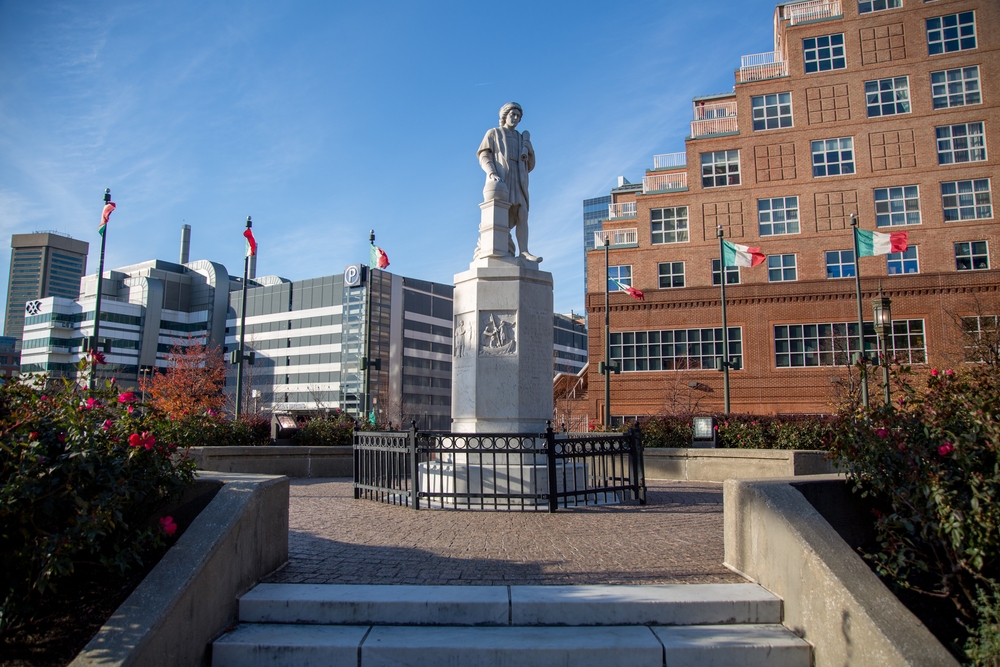
Columbus Statue Toppled, Thrown Into the Harbor
Amid Fourth of July fireworks displays across the city, activists toppled the marble Christopher Columbus statue near Little Italy and dumped it into the Inner Harbor. The destruction of the memorial to the Genoa-born Columbus followed similar actions in cities across the country and hardly came as a surprise here. Two weeks before the vandalism, an anti-racist protest group known as Baltimore Bloc had warned Mayor Bernard C. “Jack” Young that activists planned to take down the Columbus monument if the city did not act to remove it as it had done previously with Baltimore’s four Confederate monuments. The statue at the eastern edge of the Inner Harbor, the most prominent of three Baltimore monuments to Columbus, had been unveiled in 1984 by President Ronald Reagan and Mayor William Donald Schaefer. The 14-foot statue was paid for by a fundraising campaign led by the Italian American Organizations United of Maryland, which is recreating the statue with plans to reinstall it on private property elsewhere in the region. Shutterstock
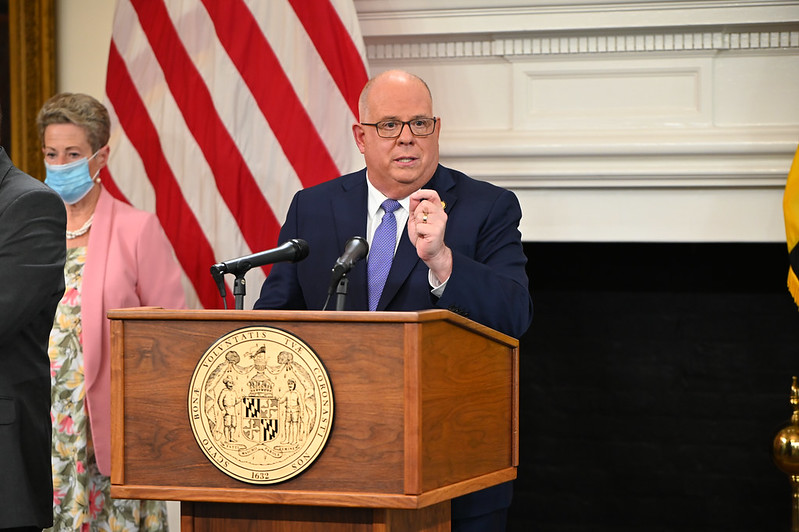
Larry Hogan Raises His National Profile
Larry Hogan has never met a media opportunity he didn’t like—or so it seems. It comes as no big shock, then, that the historically popular two-term Republican governor is starting to hint at a run for higher office—maybe even that really high one, especially since the GOP is in such dire need of a reinvention by a likeable, Reagan-esque leader. (It was Reagan’s name, after all, that Hogan claimed he wrote in as a protest vote in November.) And, in fact, after burnishing his reputation here and nationally with a fairly capable response to the pandemic, the frequent Trump critic has said he wouldn’t rule out a run for president in 2024. At the least, however, he intends to play a role in the future of the party. “I do want to be a part of the discussion about where we go as a party and where we go as a country,” the former chairman of the National Governors Association told Bloomberg TV. “So I’m going to try and continue to be involved and speak up and let people know what I think we should do.” But Hogan, 64, said he plans to stay in Annapolis for now: “I made a commitment to the people of Maryland to serve out my term." Courtesy of Maryland GovPics

Mo Gaba Passes Away
A collective sense of heartbreak was felt among players, fans, and the entire city as the Orioles took the field for their home opener at Camden Yards on July 29. But it wasn’t because the birds would be playing to an empty stadium, or because the start to their season had been delayed due to the effects of the pandemic. It was because, one day prior, the city lost perhaps the most beloved fan in local sports history. Hours before 14-year-old Baltimore sports superfan Mo Gaba lost his lifelong battle with cancer on July 28, it was announced that he had been awarded the Wild Bill Hagy Award and elected into the Orioles Hall of Fame. Since his passing, the city has continued to honor Gaba—a shining light who inspired us all with his infectious smile, gentleness, and positivity—in thoughtful ways. The Ravens filled sections, dubbed “Mo’s Rows,” with cardboard cutouts of Gaba and painted “BaltiMOre” in the endzone at M&T Bank Stadium. And a street near both of the stadiums will soon be dedicated as Mo Gaba Way. All are but small reminders of the massive mark Gaba left on the world. Photo courtesy of Baltimore Orioles
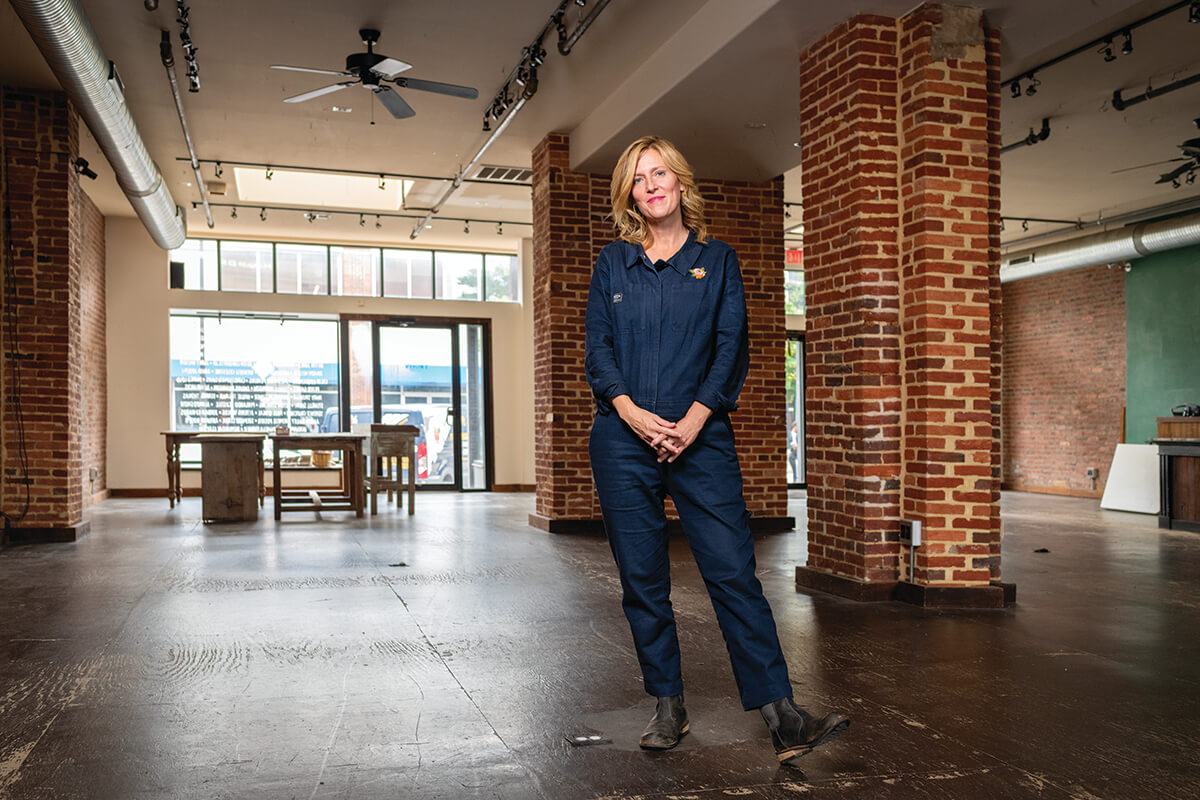
Trohv Shutters its Doors in Hampden
In a year filled with so much loss, the closing of Trohv felt like a pile-on. The beloved shop on The Avenue—always filled with the best gifts, home goods, and cards—was no match for the pandemic and unforgiving rent due. Despite a groundswell of support for the store and its gem of an owner Carmen Brock, Trohv closed its doors in August. A Hampden mainstay for almost 14 years, the shop was the true heart and soul of the community. People came out in droves the last four weeks of business, their sad faces hidden behind masks, telling Brock with tears in their eyes, “this was my favorite shop” or “I had my first kiss here.” It all felt like a bad dream that could have been avoided if small businesses were given a lifeline during an impossible situation. But in true Carmen fashion, she was focused on the sunshine. “It has been the joy of my life to have a small business in Baltimore,” she told us before the closure. “For me, Trohv felt like a laboratory that sort of became a personal love story, and I will be forever grateful for the opportunity to have worked, hustled, lived, and loved the many creative people in this beautiful town.” Photography by Mike Morgan

The Baltimore Symphony Orchestra Enters a New Era
One year after picket lines and protest signs were a daily sight at the Joseph Meyerhoff Symphony Hall, the Baltimore Symphony Orchestra finally reached a period of healing—with both the organization’s musicians and management agreeing to their first long-term contract since 2016. It ended years of contentious negotiations, and marked a new chapter for the 104-year-old arts institution. The agreement included gradual pay increases for artists, the restoration of 10 full-time positions over the next five years, and the formation of a task force to address diversity, inclusion, and equity within the organization. To that end, in early September, assistant conductor Jonathan Rush and artistic partner Wordsmith were appointed to the BSO’s artistic team, joining cellist Esther Mellon as the orchestra’s only African-American artists, and serving as advisors on original programming. Amidst these changes, maestra Marin Alsop will also step down from her podium in 2021, leaving behind a legacy as the first female conductor to ever lead a major North American orchestra and the founder of the organization’s vital OrchKids program, which she will continue to oversee as music director laureate. Meanwhile, the LA Opera’s James Conlon will come on as artistic advisor in 2021 while the search for her replacement gets underway. Photo courtesy of the BSO

Maryland State Parks Break Records
There was really only one safe thing to do when quarantine fatigue started: Take to the trails. And Marylanders did, in record numbers. In October, Governor Larry Hogan announced that the Park Service had already recorded 17.1 million visitors, compared to 14.9 million for all of 2019. In July alone, 3.4 million visitors hit places like Sandy Point, Elk Neck, Patapsco Valley, and Gunpowder Falls—almost one million more than the previous July. (That also meant some parks closed on busy weekends after reaching maximum capacity, and others like Calvert Cliffs imposed a residents-only rule.) But there were still plenty of parks to go around, and families, friends, and solo hikers were rewarded with waterfalls, swimming holes, swinging bridges, and changing foliage. Bike sales skyrocketed and camp sites quickly filled up, as folks took to the great outdoors—mask and water bottle in hand. Shutterstock

The BMA Causes a Stir in the Art World
When it was announced that the Baltimore Museum of Art would deaccession works by Andy Warhol, Clyfford Still, and Brice Marden in order to fund a $65-million “Endowment for the Future,” objections came from both within the BMA and far beyond its walls, garnering criticism from the likes of the Los Angeles Times’ Christopher Knight and Pergamon Art Group’s Martin Gammon in addition to letters penned by members of the BMA board. Though the endowment itself would be designated for care of the BMA’s collection, equitable pay for its staff, diversity programs, establishing evening hours, and extending free admission to special exhibitions, concerns were raised over the implications of using the museum’s collection like chips to cash in for funding initiatives beyond the collection. Whether the sale will eventually go through remains in the air. On Oct. 28, the original date of the sale, the BMA announced that it would be paused to allow for “further, necessary conversations” about their intentions, but the museum also reaffirmed its dedication to the Endowment for the Future, saying, “Our vision and our goals have not changed. It will take us longer to achieve them, but we will do so through all means at our disposal.” Photo courtesy of Mike Steele via Flickr Commons
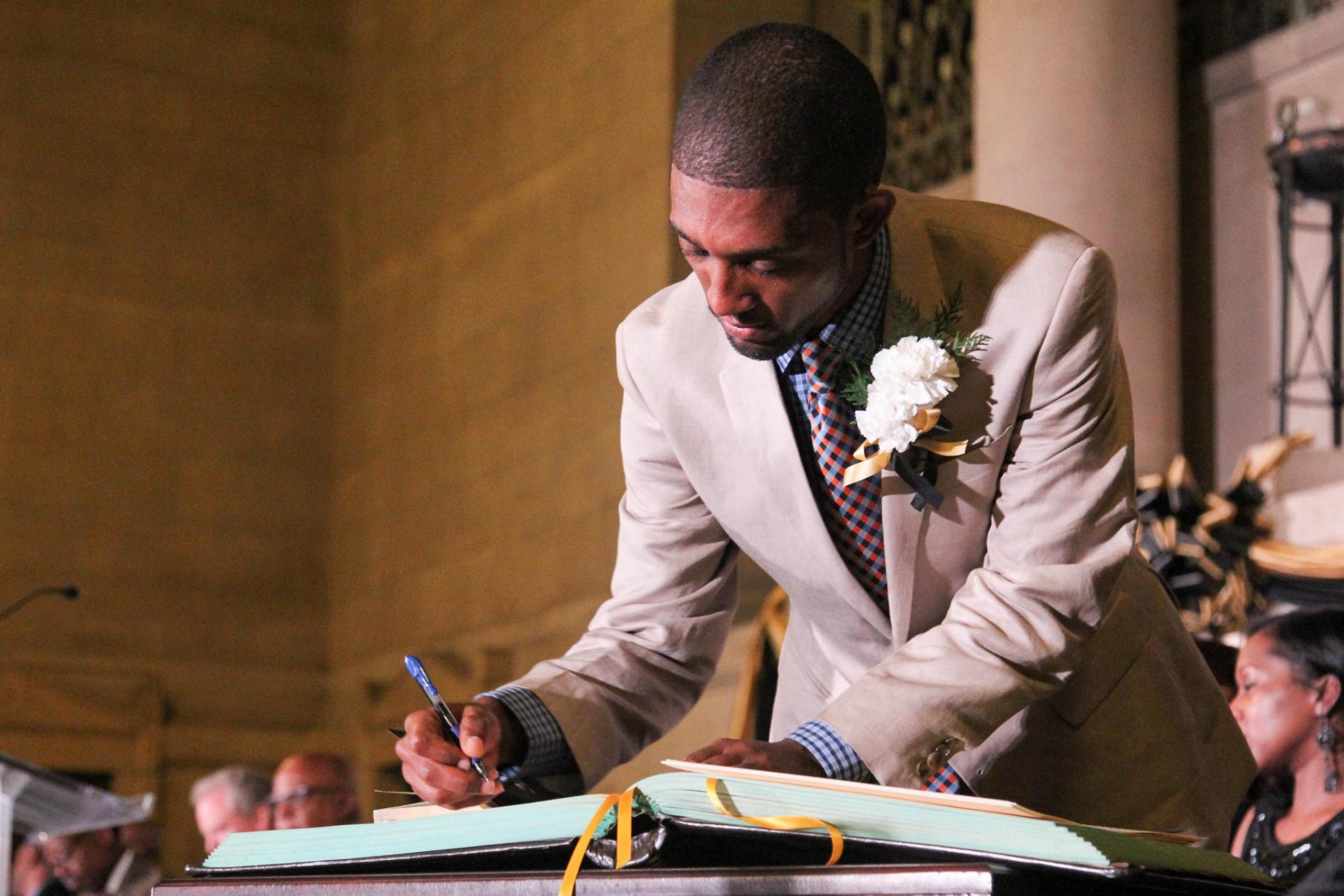
Brandon Scott Wins Mayoral Election
After a tense few days counting mail-in ballots during the Democratic primary for mayor in June, 36-year-old City Council President Brandon Scott rallied and pulled out a close victory over former Mayor Sheila Dixon. In a crowded field with 24 candidates receiving votes, Scott won 29.6 percent of the tally. Dixon claimed 27.5 percent of the ballots cast—a margin of slightly more than 3,000 votes. (Perhaps the most surprising result was that Mayor Bernard C. “Jack” Young, who had assumed office in the wake of former Mayor Catherine Pugh’s criminal plea, received just 6.2 percent of the vote.) Earlier this month, Scott—the youngest person to become mayor of Baltimore in at least the past century—was officially inaugurated as Baltimore’s 52nd mayor in a small ceremony at City Hall, which was broadcast online. “I am not a savior for our city,” the Park Heights native said afterward. “No one is coming to save us. We have the ability to save ourselves. But we can only do that together.” Photography by Meredith Herzing
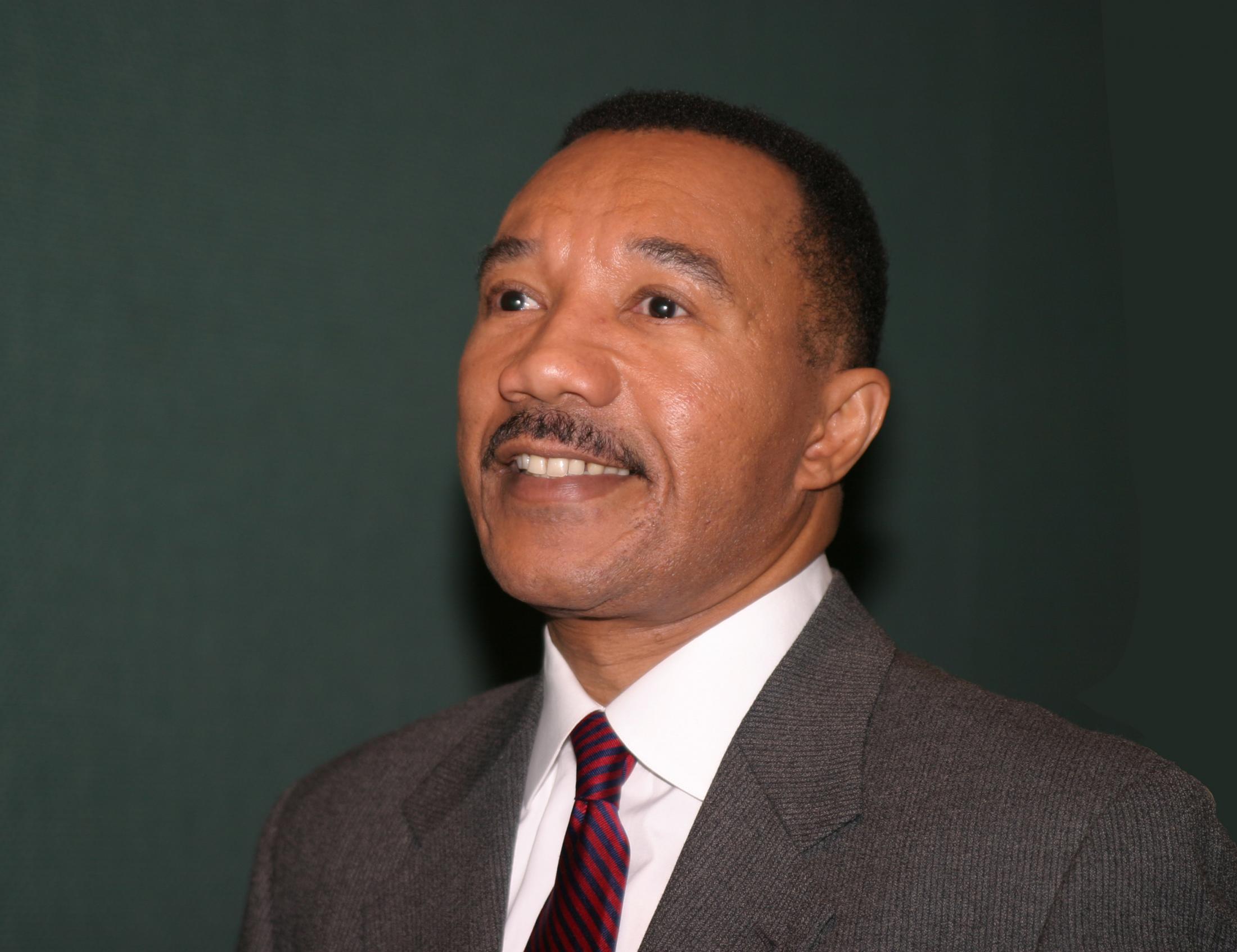
Kweisi Mfume Wins Back His Former Seat
After two-plus decades out of elected office—and tenures leading the NAACP and his alma mater Morgan State University—72-year-old Kweisi Mfume’s return to Capitol Hill this year is a remarkable full circle moment. Overcoming a troubled youth, Mfume was elected to the Baltimore City Council in 1978. Eight years later, he went to Washington, filling the historic seat previously held by Parren Mitchell. Following the death of Elijah Cummings—who like Mitchell had become not just a Baltimore but national civil rights leader—Mfume returned to his former House seat in May of 2020 after winning a special election. He replicated the victory with another win in November, easily defeating Republican challenger Kimberly Klacik. Mfume has vowed to help those “struggling at this hour to fight off the terrible disease of coronavirus” as well as those struggling to meet their basic economic demands in the wake of the COVID-19 crisis. He has pledged to work to improve the city’s public transportation and school infrastructure woes as well as advocate for stricter gun-control measures, including a renewal of the federal assault weapons ban, which he had pushed when he previously held the seat. Shutterstock

Trey Mancini Announces He's Cancer Free
Baseball fans were shocked in mid-April when Trey Mancini, the O’s best and most popular player, announced he had been diagnosed with Stage 3 colon cancer. It was hard to comprehend that someone so young, strong, and dynamic could be that sick. Mancini missed the entire 2020 season and went through several rounds of chemo, all the while being shown enormous love and support from the fans and his teammates, who sported F16HT shirts and handmade F16HT signs in his honor. And Mancini, always one to think of others first, created the F16HT campaign to raise money for colorectal cancer awareness. Then, the news we’d all been waiting for finally came: On November 12, Mancini announced that he was officially cancer-free and that he intends to play in the 2021 season. Orioles fans already rooted hard for Trey—now, if possible, we’ll root even harder. Photo courtesy of Baltimore Orioles

COVID Rocks the Ravens
A Thanksgiving matchup between archrivals the Ravens and the Steelers? It almost seemed too good to be true. And suddenly, it was. The day before the game, it was announced that, due to a COVID outbreak on the team, the game was being moved to Sunday. Little by little, the details emerged: That a (still unnamed) strength and conditioning coach had been sick and infected several members of the team, including running backs Mark Ingram and JK Dobbins. As Steelers players publicly grumbled about the cancelations (because they wanted to…catch COVID?), days went on and more players tested positive or were put on the reserve/COVID-19 list, including star quarterback and reigning league MVP Lamar Jackson. Meanwhile, in an unsurprising twist, the Steelers placed three of their own on the reserve/COVID-19 list. (No comment.)
The game was finally played Wednesday at 3:40 pm (the strange time was so as not to preempt the lighting of the Rockefeller Plaza Christmas tree, scheduled to air that night—oh, how the mighty have fallen). The Ravens played without a dozen key contributors. Robert Griffin III started at QB and second-year backup (and inexplicable TikTok phenomenon) Trace McSorley led a memorable touchdown drive in the fourth quarter. It was actually a gutty effort by the Ravens—they were in it the whole game—but they ultimately fell to their division rivals, 19 to 14. But their COVID saga wasn’t quite over yet. On Tuesday, December 8, the Ravens were scheduled to play the Dallas Cowboys. All eyes were on former Cowboy Dez Bryant, who made it clear how stoked he was for the chance to “make a point” against his old team. And then—you guessed it—shortly before kickoff, it was announced that Bryant had tested positive for COVID and wouldn’t be able to play (he has since tested negative twice). “I’m about to drink some wine and cope,” he tweeted, as excellent a summation of 2020 as we can think of. Photography courtesy of Baltimore Ravens
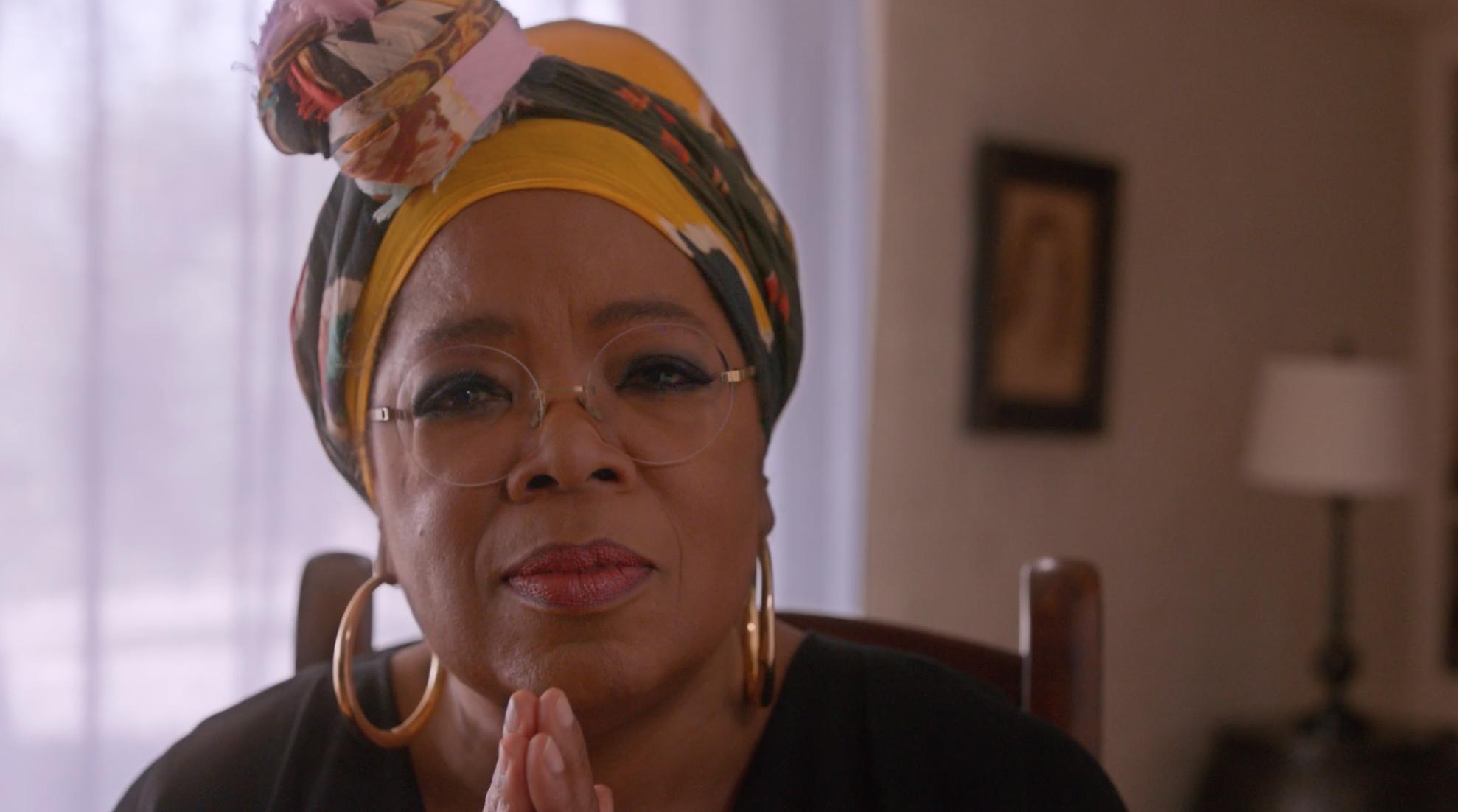
Ta-Nehisi Coates’ Storytelling Shines
What a year to be Ta-Nehisi Coates. In addition to the particularly wise choice to remain off Twitter during an election year, the celebrated author was part of several exciting new projects. Coates guest-edited the September issue of Vanity Fair curating a special edition on race in America that explored art, activism, and power. Then in November, Coates’ Between The World And Me—a letter from father to son about growing up in Baltimore and in a society that enables white supremacy—was adapted as an HBO special. When we heard the news, we were equal parts excited and curious. Would the filmed version have the same power that the National Book Award-winner carried in its pages? The short answer: Yes. Based on the 2018 adaptation and staging at the Apollo Theater, the project brought together a cast of dozens of Black celebrities and luminaries to help tell Coates’ story. Powerful voices and visuals fill just over an hour, and together they form a stunning companion piece to the author’s work. The continuation of Coates’ film projects, an adaptation of his 2019 debut novel, The Water Dancer (which came out in paperback and revived Oprah’s Book Club this year), produced by Winfrey and Brad Pitt is also coming down the pipeline. We can’t wait. Courtesy of HBO
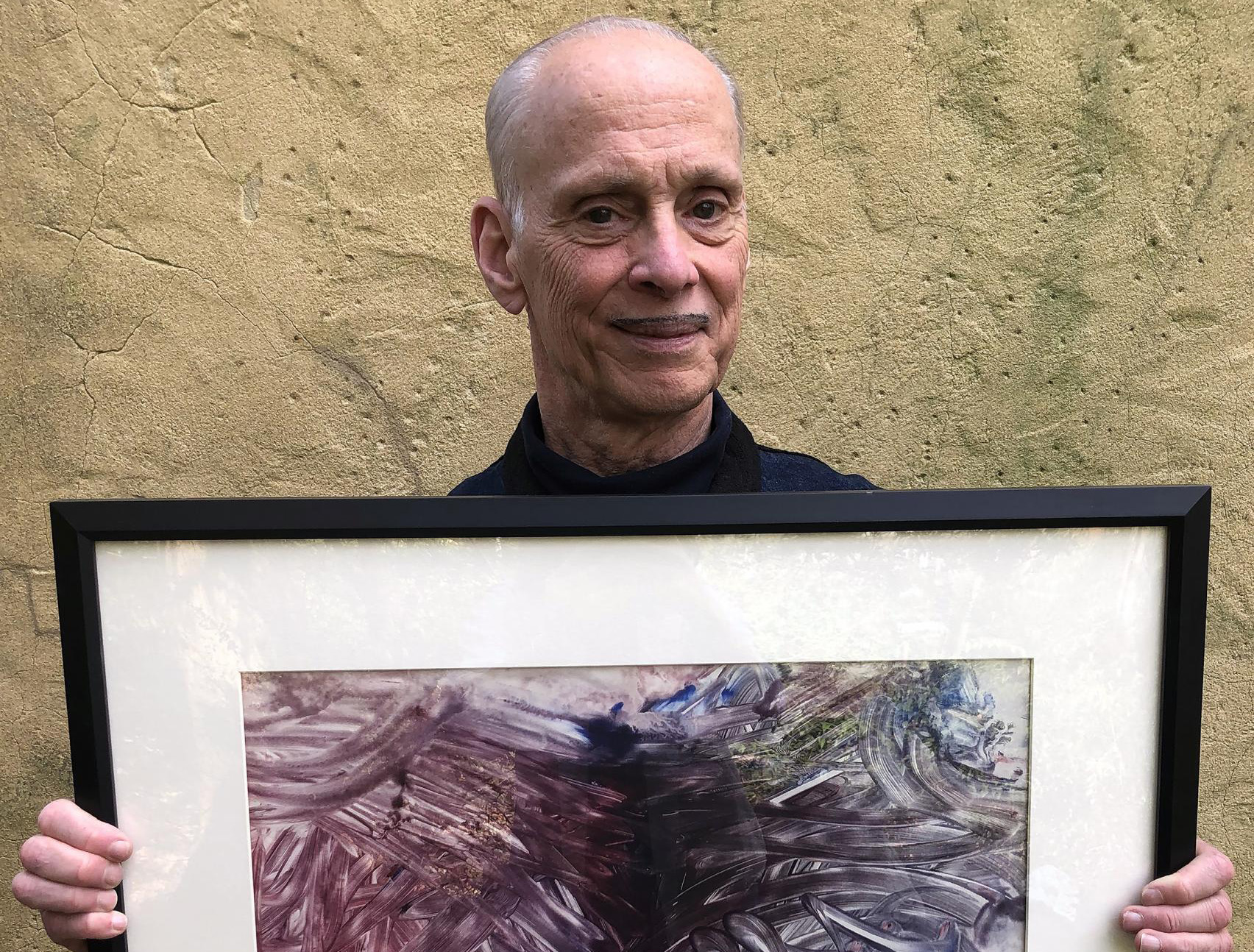
John Waters Secures Appropriately Filthy Legacy
Someday, the powers that be will see fit to take John Waters from us. And while we hope that time is still a long, long way away, it is nice to know that when it happens, we will be able to mourn appropriately: from the bathrooms at the Baltimore Museum of Art. The auteur of filth announced this year that, upon his death, his collection of around 375 paintings, prints, and photographs—including works by such prolific artists as Andy Warhol and Betsy the Chip—will go to the BMA. In addition, his name will be added to two equally important museum spaces, “The John Waters Rotunda” in the European art galleries and “The John Waters Restrooms” in the East Lobby. Photography by Marnie Hertzler

Marylanders Mourn Lives Lost
Five-thousand, two-hundred and seventy—that’s the number of Marylanders who have died (at press time) from COVID-19. Not that any one life can be reduced to a number. Every number represents a person. A mother, a sister, an aunt, an uncle, a cousin, a niece, a nephew, a husband, a wife. There was Windsor Mill’s DJ “Sugar” Chris Tittle, who spread his love for old-school classic R&B and house music; Evelyn Caro, 69, who became a registered nurse at the age of 50; Mary Wilson, 83, the first African-American woman to serve as a senior zookeeper at what is now the Maryland Zoo. India Jaimala “Mala” Singh, 65, a Lutherville resident who designed tapestries and saris back in her native India and went on to become one of the top designers for Calico, a design store chain. Chianti Jackson Harpool, 51, a political fundraiser who owned a marketing and public relations firm. Eastern Stewart Junior, 71, a longtime house manager at the Bowie Center for the Performing Arts. And Joseph Costa, 56, Chief of the Division of Critical Care at Mercy Medical Center in Baltimore, who succumbed after dedicating his career to caring for the sickest patients and continued to work on the front lines as the virus proliferated. All of you—as well as the thousands not named here—will be greatly missed. Photography courtesy of Mercy Medical Center
